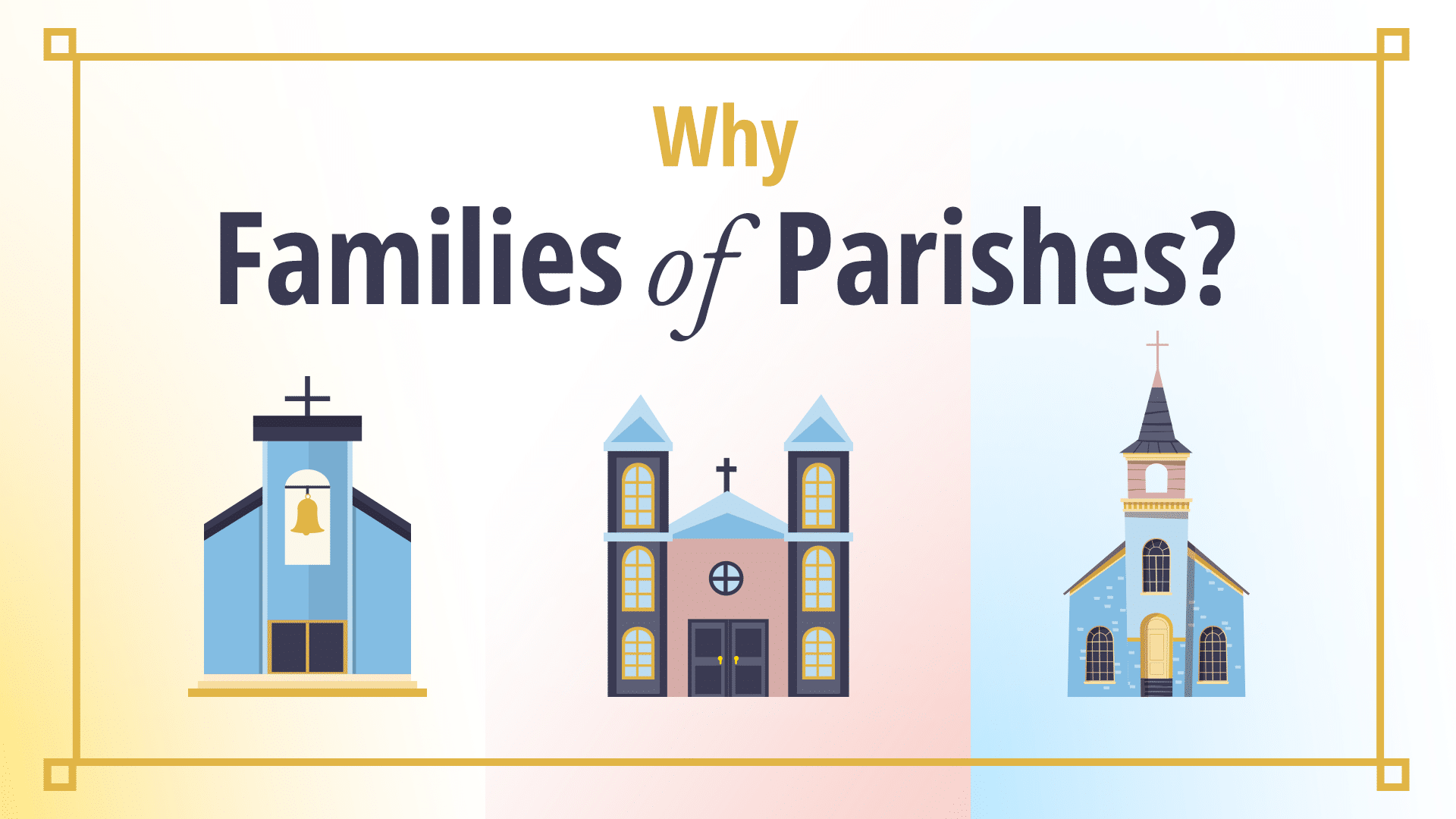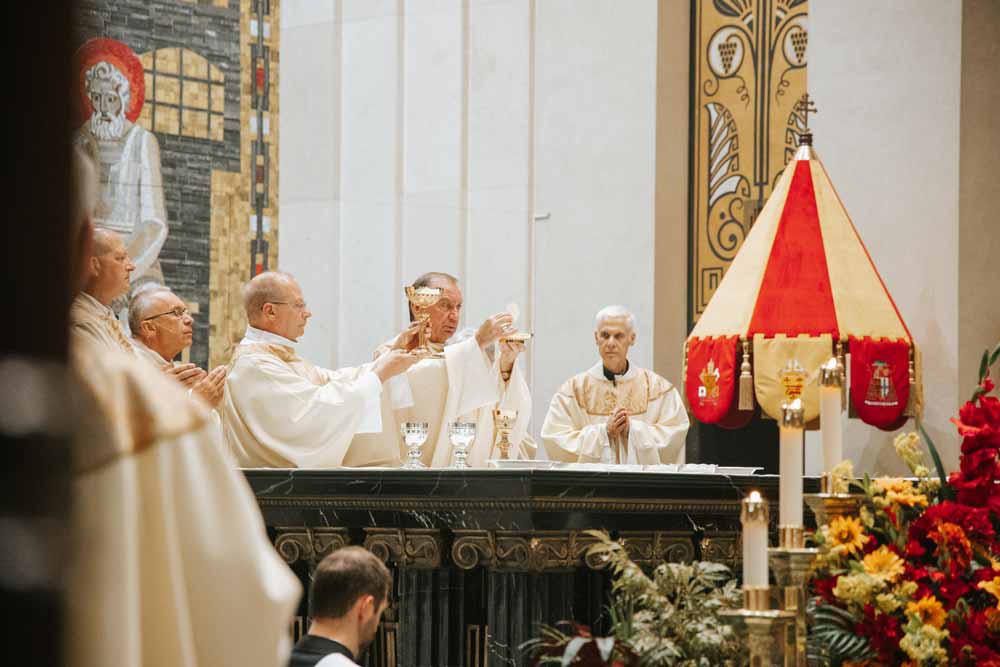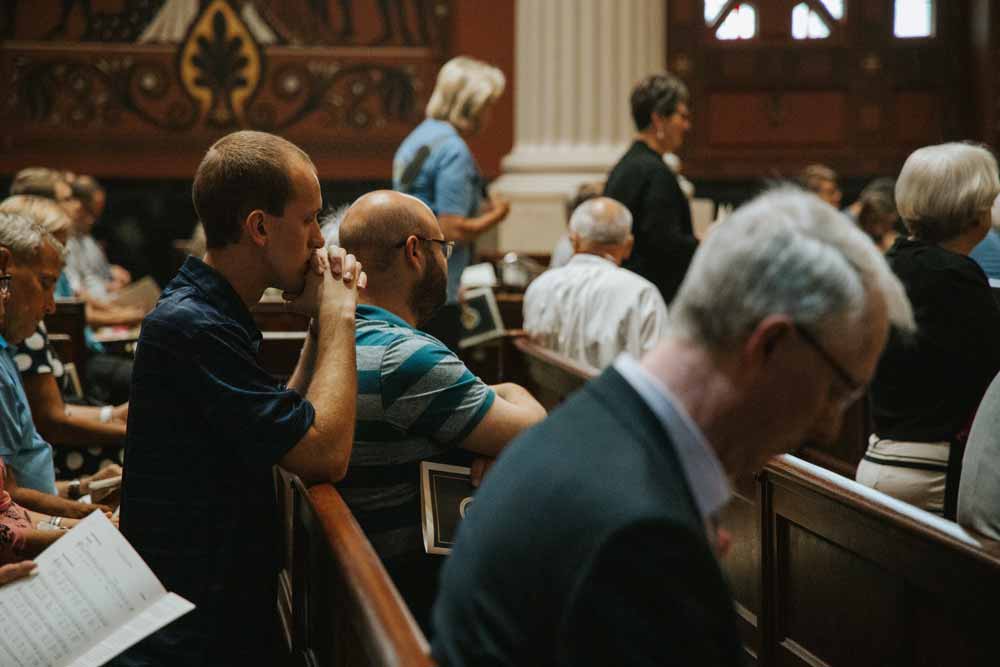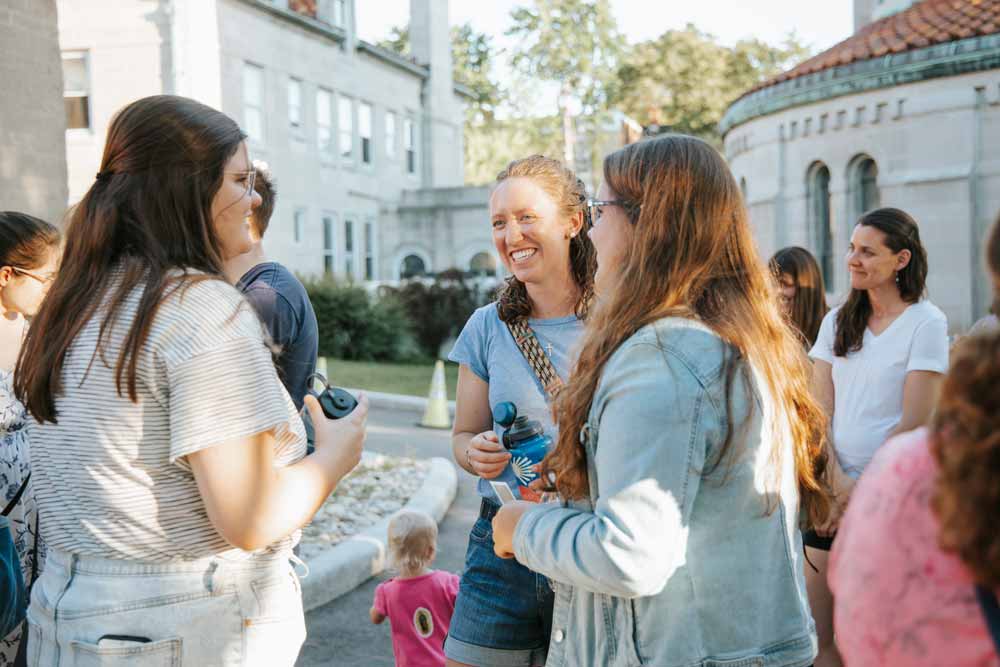
Beacons of Light is a process of pastoral planning to best arrange all the resources of the archdiocese to proclaim the Gospel and make disciples in this particular time and place.

Full, joyful and centered on the Eucharist.

Nurturing an ever-closer relationship with Jesus.

Spreading the love of Jesus through charitable outreach.
Beacons of Light is a multi-year process that began in 2022 with the arrangement of 208 parishes into 57 Families of Parishes. These new Families of Parishes have come together as one faith community, using their collective resources to focus more on mission than on maintenance. Pastors and parish leaders are collaborating on the future of their Family of Parishes.
Vibrant communities of faith that radiate Christ – thereby joyfully inviting people to know, love and serve Him through this life and into the next – will be realized by living out these six guiding principles:
A process of pastoral planning to best arrange all the resources of the archdiocese to proclaim the Gospel and make disciples in this particular time and place.
A Family of Parishes is a grouping of parishes led by a common pastor and unified lay leadership, and characterized by collaboration and shared resources. A parochial vicar (or multiple parochial vicars) or retired priest may also serve in a Family of Parishes.
We have a responsibility to make the best use of all the means which God has provided us to pursue the mission of the Church to proclaim the Gospel and make disciples. With this as our goal, parishes need to be vibrant, evangelizing communities that continuously draw parishioners and attract new members into a more intimate relationship with Jesus. This is of urgent importance because:
After careful consideration of these factors, along with input from priests and other leaders in the archdiocese, it was determined in 2020 that this pastoral planning initiative is needed.
The draft was created based on a comprehensive analysis of data and reviewed by teams comprised of priests, Pastoral Center and Catholic Schools Office staff, and Archbishop Schnurr. Data was collected from the parishes and schools of the archdiocese, spanning the previous 5 to 10 years on average but excluding the COVID-19 year of 2020. Demographic data was also examined and balanced against the pastoral considerations that affect life in our various communities. The data set included:
The previous planning processes resulted in “clusters” or “regions” of free-standing parishes under a common pastor. Beacons of Light intends to go further by supporting each Family of Parishes in becoming a fully integrated community of faith with the expectation of becoming, over time, one canonical parish, possibly with multiple churches.
The disposition of all parish assets, including church buildings, will be decided within each Family of Parishes based on particular circumstances and opportunities. The planning for the future of each Family of Parishes will be done at the local level by the pastor in collaboration with his staff and Family leaders. It is important to remember that a parish can be made up of a single church or multiple churches.
Lay people who are interested in being involved in the pastoral planning process within their Family should contact their pastor and visit the Pastoral Planning Pathway at https://pathway.catholicaoc.org.
Catholic schools serve the evangelizing mission of the Church. The operation of Catholic high schools will not be impacted by Beacons of Light. Catholic elementary schools within a Family of Parishes will be included in the pastoral planning within that Family.
Parishes are individual juridic persons that retain money donated to them. Individual parish finances will remain separate and not be comingled with other parishes in the Family of Parishes unless that parish undergoes a canonical change, i.e. is suppressed or canonically altered in some way.
Since 2013, an Office for the New Evangelization has existed at the Pastoral Center. Now called the Center for the New Evangelization (CNE), its work includes training, equipping and supporting parish staffs in four areas of evangelization:
In addition, large-scale evangelization events are conducted by the CNE to augment parish evangelization efforts. The CNE annually ministers to hundreds of engaged couples, organizes Eucharistic adoration for thousands of youth, supports comprehensive campus ministry on three university campuses, engages in Spanish language outreach to a large and growing Hispanic community, and fields retreats for hundreds of parish workers.
Each Family of Parishes is following the Pastoral Planning Pathway to guide its future. This Pathway assists each Family in creating a pastoral plan for the parishes in the Family, articulating how they will live out the six Beacons principles and abide by each of the parameters, all aimed towards vital, mission-driven parish life within the Family of Parishes and ultimately, as one canonical parish.
Families of Parishes will be communities of charity and justice, serving those most in need and working to change systems that oppress and marginalize.
As centers of missionary outreach, Families of Parishes find new ways to foster discipleship among all the baptized. Schools, parishes, and indeed Church itself are centers of this essential work.
Families of Parishes are communities of grateful disciples. Recognizing God’s gifts, they use their talents, skills and resources to build up the Church and live as Christ’s body in the world.
Pastors, in collaboration with parochial vicars, deacons and lay ministers, according to their proper roles and charisms, share responsibility for pastoral leadership. The spiritual, physical and mental health and ongoing support of ordained and lay leaders is vital for Families of Parishes.
Each of us is called to actively participate as a member of a parish, the Universal Church and our local Church, led by our archbishop. Parishes continually deepen the bonds of communion with other parishes.